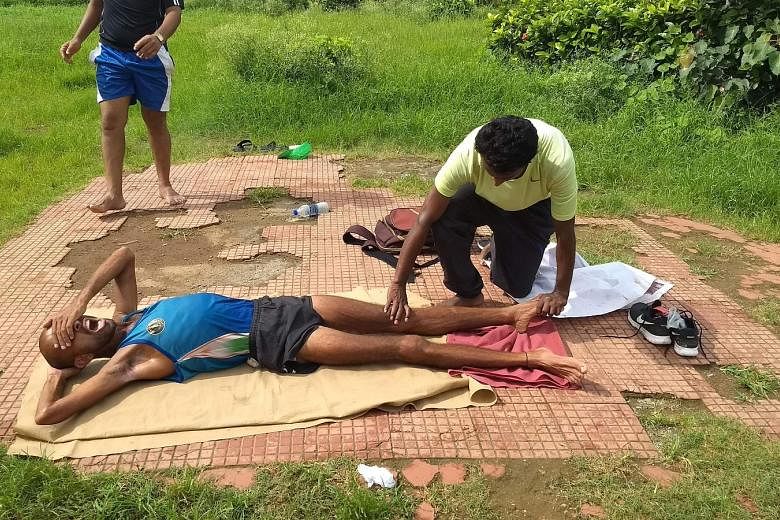Why would anyone want to run 400km across a desert? And why would anyone do it again?
In moderation, running improves both your health and physique. In extremes, it does quite the opposite.
The feet blister and swell to the point where multiple pairs of shoes in ascending sizes are required.
Toenails turn black and fall off or, worse, fill with fluid and require puncturing. Some runners even choose to strike pre-emptively and have theirs surgically removed.
Stress fractures are customary.
Tendons rub and become inflamed, sending shooting pains up the leg with each agonising step.
Muscles seize up, cramp unpredictably and eventually wither away, leaving a gaunt and haggard appearance. Clothing and pack straps rub the skin raw and bloody.
The stomach often ceases to function, leading to vomiting or diarrhoea - a serious issue when one needs to drink 10 litres of water and eat upwards of 6,000 calories each day.
But the greatest effect is less visible - the mind, addled by a lack of sleep and constant battles with the body, begins to lose its grip on reality. Hallucinations are common.
Emotions can oscillate from elation to anger to melancholy.
Speech becomes slurred; planning, rational decisions and accurate navigation, almost impossible.
It is not, by any conventional definition, pleasurable. So, why then are increasing numbers of people paying good money to put themselves through it?
This is a question that academics at the University of Cardiff have sought to tackle.
Published in the Journal Of Consumer Research, their research confronts the seeming conundrum that, on the one hand, consumers spend billions of dollars every year to alleviate different kinds of pain, while, on the other hand, millions of people take part in extremely painful leisure pursuits.
The paper's title, Selling Pain To The Saturated Self, implies a key premise - that, unlike many sports and activities where pain is a risk to which participants are prepared to subject themselves, in endurance sport, pain is a core part of the appeal.
Races are described as "brutal" and "savage", and suffering is discussed with gleeful awe.
Although the research technically focuses on assault-course racing rather than ultramarathons, the three leading motivations they uncover are equally transferable.
Firstly, pain makes us more aware of our own bodies - or, in the study's terms, enables us "to rediscover our corporeality… through sensory intensification".
In a world where our bodies have largely ceased to be useful tools for survival and, instead, merely act as receptacles, it is perhaps little surprise that some form of disconnect has arisen.
For the frustrated, sedentary office worker, sensory intensification presents an opportunity to bridge this dualistic divide.
It follows that the popularity of ultramarathons is closely linked to the comfort of modern life.
Try explaining to people whose lives are physically uncomfortable by necessity that you run in circles for pleasure.
Secondly, there is a degree of mental escapism.
As the authors put it: "By flooding the consciousness with gnawing unpleasantness, pain provides a temporary relief from the burdens of self-awareness."
Escaping from self-awareness would appear to be a common characteristic of the human condition.
Alcohol tends to be our society's favoured fix, although binge-eating, antidepressants and, ultimately, suicide are also associated problems.
Finally, the authors assess the role that painful experiences play in retrospect. Pain helps people "craft the narrative of a fulfilled life through wounds and scars".
In reality, ultramarathons are lonely, arduous and largely uneventful. And yet, through social media and blogs, they are dramatised into heroic struggles and atheist pilgrimages, a transformation that is reinforced by the well-intentioned, if misguided, puritanical attitude that perseverance is, by its very nature, worthy.
THE GUARDIAN

